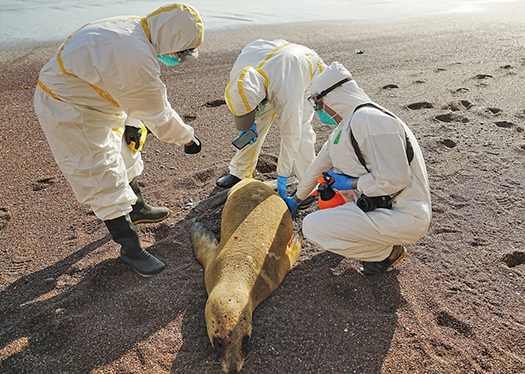
Workers examine a sea lion carcass on Peru’s Pacific coast. (Photo courtesy of Sernanp)
Avian flu is decimating seabird populations on South America’s Pacific coast, especially in Peru, and has spread to marine mammals. Scientists say wildlife mortality is higher than officially reported and advocate stronger steps to monitor the pandemic and better prepare for future disease outbreaks. In Peru, the H5N1 influenza virus swept southward along the rocky islands and coastal outcrops where hundreds of thousands of seabirds nest. The wave began in November 2022 with Peruvian pelicans (Pelecanus thagus), then struck Peruvian boobies (Sula variegata) and guanay cormorants (Leucocarbo bougainvillii). Official reports say 55,000 birds have died, but that figure is probably barely one-quarter of the actual number, says Carlos Zavalaga, who heads the seabird research group of the Marine Ecosystem Research Unit at the Scientific University of the South in Lima. H5N1 spread around the world along bird migration routes, arriving in Peru at nesting time for seabirds, which form... [Log in to read more]